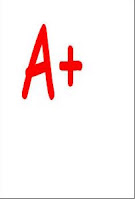A New Renaissance
 |
| http://goo.gl/hN3wJH |
I believe that technology is presenting us with an opportunity to reclaim some of that creativity and originality. I believe we are living in a new renaissance. However, because it is driven by technology I think many discount the potential.
When Brunelleschi figured out how to complete the duomo atop Santa Maria in Florence in the 15th century, he was creating. He saw a problem and took a risk. The result? A spectacular piece of architecture that is still marveled at today. He had some tools at his disposal and with some design thinking, built a structure not seen since ancient times.
The same is true for our students. I have watched students who never said two words in class create a stop-motion video about Thomas Jefferson that blew me (and them!) away. I saw students create detailed presentations using anything and everything but PowerPoint (because I told them PPT wasn't an option) and listened to the reactions from their classmates: "Wow! We are really smart!" "I never do anything like this in other classes." "Ms. Schaefer, last year we weren't this good. How did we become so impressive?!"
Are they smarter? Did they "become" impressive overnight? Yes and no. They did have better presentations, but not because they suddenly got smarter. They had better presentations because they branched out. I challenged them to be creative and they were. I think they found the same thing in creating that I have: technology allows a safe environment to take risks and the results are amazing.
Take a moment to stroll your hallways and talk to your students and observe your teachers. I assure you if technology is being used correctly then you will find your own evidence of this renaissance. If you feel you don't have evidence on your campus of effective technology use, or if you need more convincing, simply turn to Twitter, your G+ communities, and YouTube. Any of these venues can provide ample evidence of complex problem solving, original thinking, and creative genius on the part of students at all grade-levels.
Just as the masters of the Renaissance had the time and ability to think, collaborate, and create, so do our students. The tools might look different, but the desired outcomes is the same: produce something original that I am proud of. What is different is the access to the tools. In place of painters palettes, chisels, parchment and quills, our students use smart phones, tablets, software, and social media sites. No one told the masters of the Renaissance not to try. No one took their tools from them. No one "blocked" their access to what they needed to do their jobs. So why do we block and/or ban so many tools for our students? Why are we disadvantaging our students? Why are we preventing them from achieving their fullest potential?
There is a rush that comes from releasing ones' creative juices. And there is a true sense of pride when solving a problem in a new and unique way. I believe that our technology today is allowing a new renaissance to occur. But we have to be open to it. So allow your students access to the tools of the 21st century renaissance. The turn your students loose and see what they dream up. You most likely have a 21st century Brunelleschi, Michelangelo, Giotto, Alberti, Machiavelli, or Ghiberti. But no one will know until they are given the chance.
I welcome your comments.



Comments
Post a Comment
Thanks for sharing your thoughts!